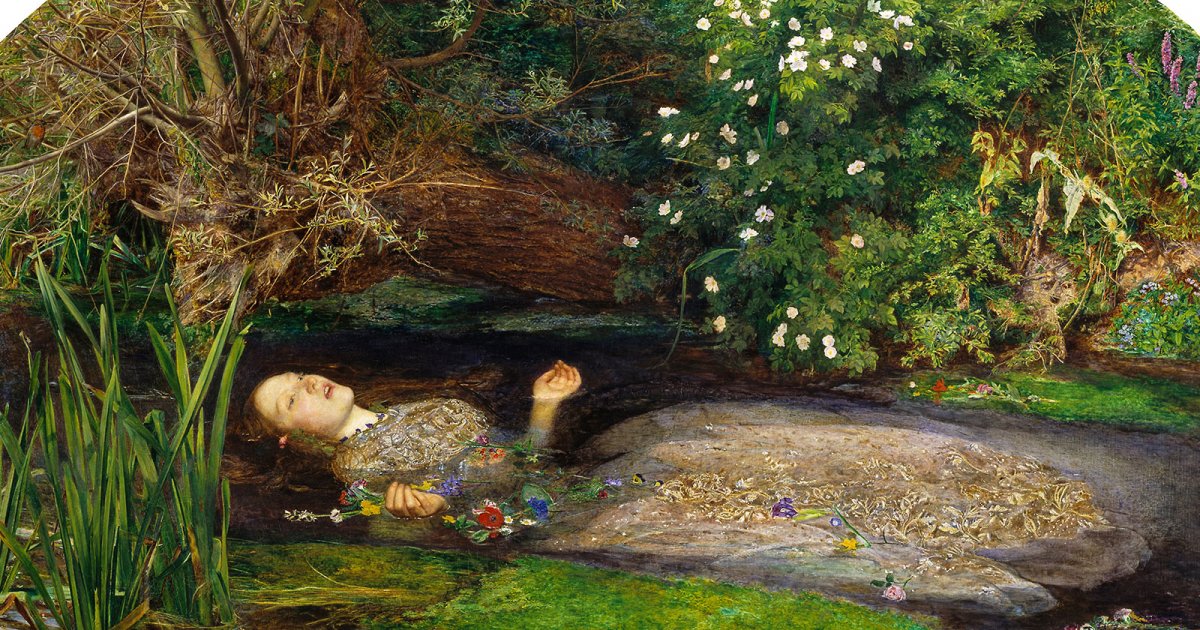TATE BRITAIN, Ophelia Millais
 Language: English / USA
Language: English / USA
Now I'd like to tell you about Ophelia by John Everett Millais, which is one of the most important works you can admire in the Pre-Raphaelite section. It depicts one of Shakespeare's characters: the unhappy girl who kills herself for her love of Hamlet. As you can see, Millais transforms the drama of the suicide into a dream-like vision where Ophelia gently slips into the waters of a pond, immersed in the nature that frames her languid end.
In the tragedy Hamlet, the melancholy and tender character Ophelia does not hold a prominent position, yet her character is one of the most beloved by artists, especially for her silent and painful death. Millais depicts the young drowned woman as if she was a mysterious and sensual aquatic plant floating between reeds and water lilies on the clear surface of a pond. In Shakespeare's tale, Ophelia goes down into the water "like a mermaid" and is dragged underwater by her drenched and heavy clothes; she still holds the flowers she wraps garlands with in her hands, and you can almost hear her singing a last bitter love song from her partially open mouth.
To study and reproduce the frame of nature, the painter had moved to the Surrey countryside in June. Painting in the open air, waiting for the perfect flowering of every single species, he had to fight against swarms of insects and the weather conditions the entire summer. But besides this almost scientific effort to remain faithful to the natural context, the painting is loaded with symbolic allusions. The willow, nettle, and daisies are cited by Shakespeare and associated with innocence; the other plants were instead added by the painter. The poppy alludes to the eternal sleep of death; although the rose is a symbol of love and beauty, it has a funeral connotation here connected to the ceremonies of the cult of the dead. The forget-me-nots are obviously the flower of remembrance.
FUN FACT: the model for this portrait was Elizabeth Siddal, known as Lizzie, who later married Dante Gabriele Rossetti; she also had an unhappy, premature death. To depict her realistically, Millais used a tub full of water heated by candles and had her pose inside of it. When a gust of wind blew out the candles, the artist didn't even notice and Elizabeth dared not complain. The result: the poor girl became severely ill.



